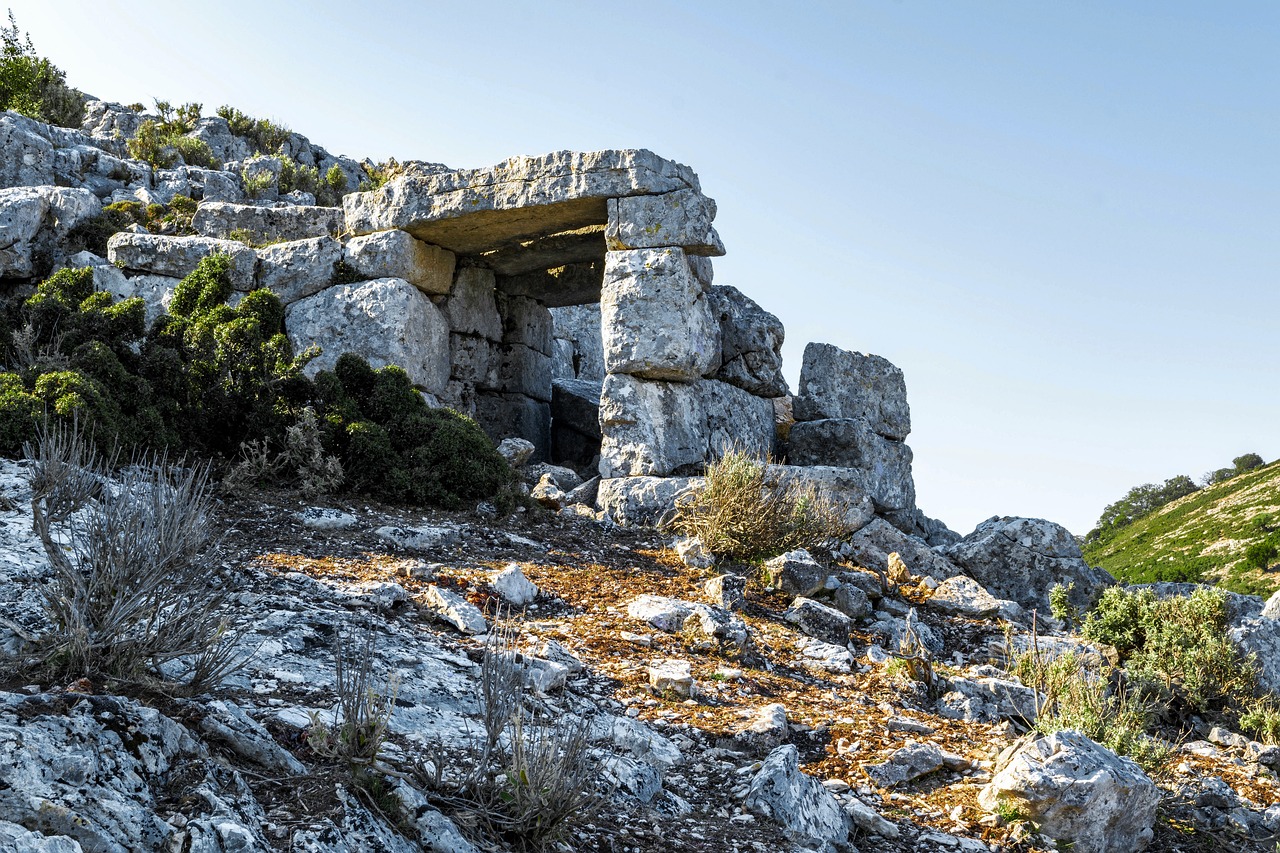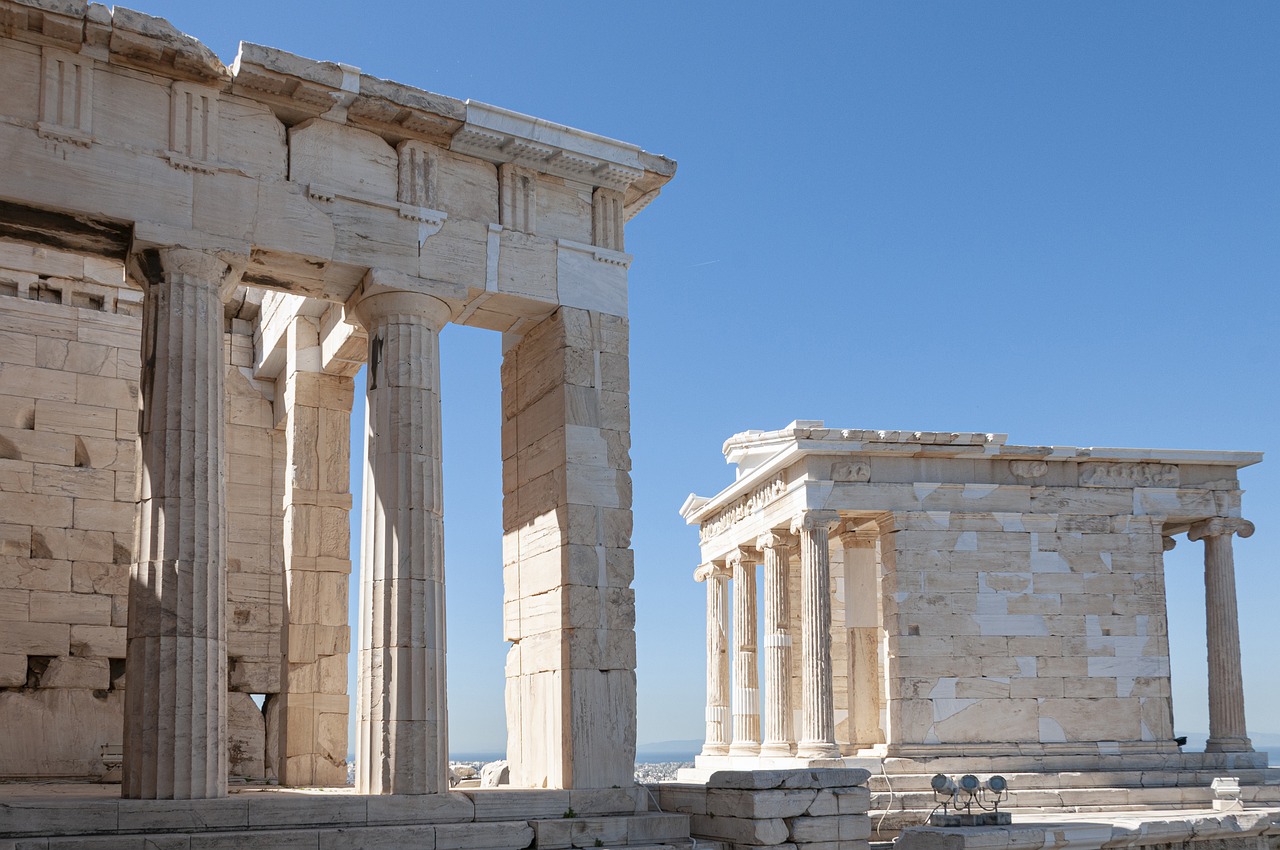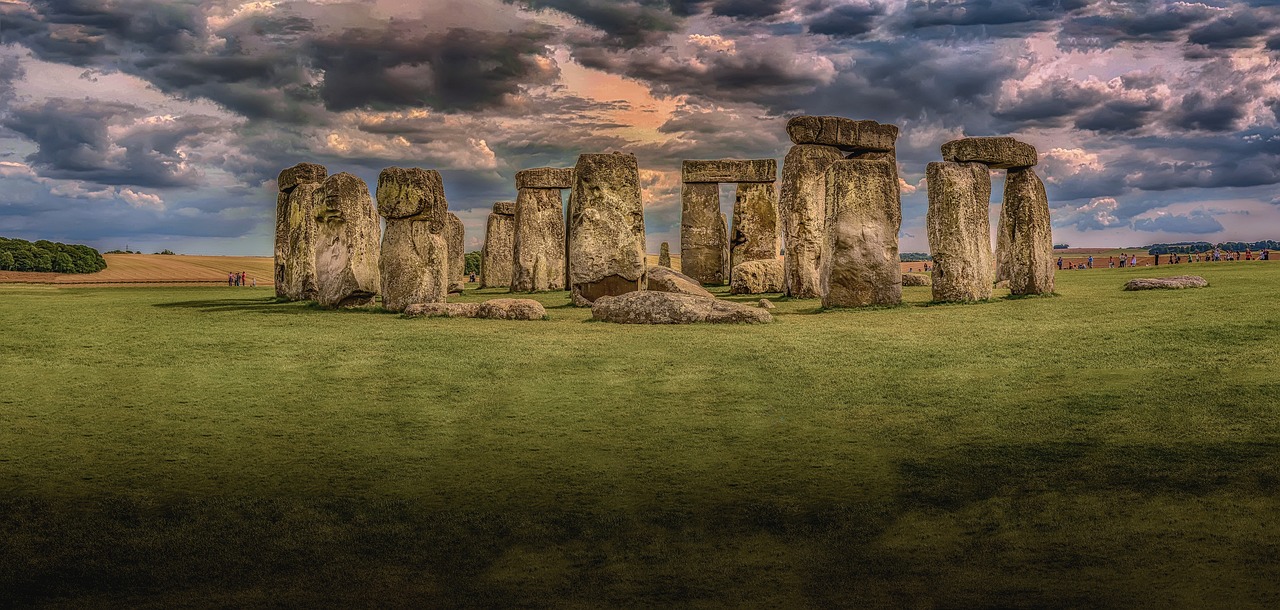The Secrets of the Ancient Egyptian Architecture
Ancient Egyptian architecture holds within its timeless structures the secrets of a civilization that continues to mystify and inspire us today. The monumental achievements of the Egyptians in designing and constructing awe-inspiring pyramids, temples, and tombs stand as a testament to their ingenuity and mastery of architectural principles.
Exploring the structural design techniques employed by the ancient Egyptians unveils a world of innovative methods that defied the limitations of their time. From the precise alignment of the pyramids with celestial bodies to the intricate layout of temple complexes, every architectural marvel tells a story of meticulous planning and skilled craftsmanship.
Symbolism permeates every stone of ancient Egyptian architecture, reflecting the deep-rooted religious beliefs, cultural practices, and societal values of the civilization. Hieroglyphic inscriptions, intricate carvings, and symbolic motifs adorn the walls of temples and tombs, offering a glimpse into a world where architecture was not just functional but also deeply meaningful.
The choice of materials and construction methods employed by the ancient Egyptians played a crucial role in the longevity of their structures. From the durable limestone used in pyramid construction to the precision-cut blocks that fit seamlessly together, the attention to detail and quality craftsmanship ensured that these architectural wonders stood the test of time.
Urban planning in ancient Egypt was a reflection of cosmic order, with cities and temples aligned to celestial axes and religious beliefs. The layout of cities such as Thebes and Amarna, along with the design of temple complexes like Karnak, showcased a harmonious blend of architecture, spirituality, and urban organization.
Engineering marvels along the Nile River, such as the construction of irrigation systems and dams, highlight the advanced technological knowledge possessed by the ancient Egyptians. The ability to harness the power of the river for agricultural purposes and create monumental structures speaks to their engineering prowess and innovative spirit.
The legacy of ancient Egyptian architecture reverberates through the ages, influencing modern architectural practices and designs worldwide. The principles of symmetry, harmony, and grandeur embodied in structures like the Great Sphinx and Luxor Temple continue to inspire architects and designers to this day.
Decorative elements and artistic expressions found in ancient Egyptian architecture showcase the craftsmanship and aesthetic sensibilities of a civilization deeply rooted in artistic tradition. Intricate carvings, vibrant paintings, and elaborate reliefs adorn the walls of temples and tombs, providing a visual feast for the eyes and a glimpse into the artistic mastery of the Egyptians.
Sacred architecture in ancient Egypt served as a bridge between the earthly realm and the divine, with temples and tombs designed as sacred spaces for ritualistic practices. The intricate layout of temples, the placement of statues, and the alignment with celestial bodies all played a role in creating a spiritual connection between the physical and metaphysical worlds.
Preservation efforts aimed at safeguarding the architectural heritage of ancient Egypt face ongoing challenges in the modern world. From environmental factors to urban development pressures, the delicate balance between preserving the past and embracing the future poses a significant challenge in ensuring that these priceless cultural treasures endure for generations to come.

Structural Design Techniques
In ancient Egypt, structural design techniques were far ahead of their time, showcasing the remarkable ingenuity and engineering prowess of the civilization. The iconic structures such as the pyramids and temples stand as a testament to the advanced architectural knowledge possessed by the ancient Egyptians. One of the key techniques utilized in their construction was the precise alignment of structures with celestial bodies, particularly the sun and stars. This not only served practical purposes but also held deep religious significance, reflecting the Egyptians' belief in the connection between the earthly realm and the heavens.
Moreover, the use of massive stone blocks, such as limestone and granite, in construction was a defining feature of ancient Egyptian architecture. The precision with which these blocks were cut, transported, and fitted together without the use of modern machinery is truly awe-inspiring. The Egyptians employed innovative methods like ramps, levers, and pulleys to move these colossal stones, showcasing their mastery of engineering principles. The structural stability of the pyramids, in particular, is a testament to the meticulous planning and execution involved in their construction.
Another notable aspect of ancient Egyptian structural design was the incorporation of complex mathematical calculations and geometric principles. The precise measurements and proportions used in building the structures not only ensured their durability but also imbued them with a sense of harmony and balance. The use of symmetry and axial planning in temple complexes and tombs exemplifies the Egyptians' keen understanding of architectural aesthetics.
Furthermore, the construction of underground chambers and passageways within the pyramids demonstrates the Egyptians' innovative approach to architectural design. These hidden spaces served various functions, from housing burial chambers to facilitating ritualistic practices. The intricate network of corridors and chambers within the structures reflects the meticulous planning and attention to detail that went into their creation.
Overall, the structural design techniques employed by the ancient Egyptians were groundbreaking for their time and continue to fascinate and inspire architects and engineers to this day. The legacy of their architectural achievements stands as a testament to the ingenuity and skill of this ancient civilization, leaving a lasting impact on the world of architecture.

Symbolism in Architecture
Symbolism in architecture played a profound role in ancient Egyptian culture, where every architectural element held symbolic significance beyond its functional purpose. The design of structures such as the pyramids and temples was infused with symbolic meanings that reflected the religious beliefs, cosmological concepts, and societal values of the ancient Egyptians. For example, the orientation of temples towards the east was symbolic of rebirth and the eternal cycle of life, aligning with the rising sun and the journey of the soul in the afterlife.
A key symbolic element in ancient Egyptian architecture was the use of hieroglyphs and intricate carvings on temple walls and columns. These inscriptions conveyed religious texts, mythological stories, and historical events, transforming the architectural spaces into repositories of knowledge and sacred wisdom. The choice of materials and colors also held symbolic connotations, with stones like limestone representing purity and eternity, while vibrant hues symbolized different deities and cosmic forces.
The layout and proportions of architectural elements were meticulously planned to reflect cosmic order and harmony, mirroring the balance and symmetry believed to govern the universe. The use of geometric shapes, such as the pyramid form, symbolized the primordial mound from which creation emerged, embodying the concept of divine order and stability in the architectural design.
Furthermore, the placement of statues, obelisks, and other monumental structures within temple complexes was not merely decorative but carried symbolic meanings related to the deities they represented and the rituals performed in their honor. The architectural landscape of ancient Egypt was thus imbued with layers of symbolism that enriched the spiritual experience of both the priests and the worshippers who entered these sacred spaces.

Materials and Construction Methods
Ancient Egyptian architecture is renowned for its grandeur, precision, and durability, standing as a testament to the ingenuity and craftsmanship of this ancient civilization. The materials and construction methods employed by the Egyptians played a pivotal role in the creation of their iconic structures, ensuring longevity and stability in the harsh desert environment.
One of the key materials utilized in ancient Egyptian construction was limestone, abundant along the banks of the Nile River. This versatile stone was easily quarried and carved, allowing for the creation of massive blocks used in the construction of temples, pyramids, and other monumental structures. The precision with which these stones were cut and fitted together is a marvel that continues to intrigue architects and engineers to this day.
In addition to limestone, the Egyptians also employed granite, sandstone, and mud bricks in their construction projects. Granite, a much harder stone, was often used for statues, obelisks, and sarcophagi due to its durability and aesthetic appeal. Sandstone, with its warm hues, was favored for decorative elements and smaller structures. Mud bricks, made from a mixture of mud, straw, and water, were used in the construction of houses, walls, and fortifications.
The construction methods utilized by the ancient Egyptians were highly sophisticated, considering the tools and technology available at the time. The use of ramps, levers, and sledges facilitated the transportation and positioning of heavy stone blocks, enabling the construction of massive pyramids that defy the passage of time. Skilled craftsmen and laborers worked in harmony under the guidance of architects and overseers to bring these architectural marvels to life.
Moreover, the Egyptians developed advanced techniques for quarrying, shaping, and transporting stones, showcasing their mastery of engineering and logistics. The precision with which the stones were cut, shaped, and aligned in their structures is a testament to the meticulous planning and craftsmanship of the ancient builders. The alignment of the pyramids with the cardinal points of the compass and their astronomical significance further highlights the mathematical and astronomical knowledge possessed by the ancient Egyptians.

Urban Planning and Layout
Urban planning and layout in ancient Egypt was a marvel of precision and foresight, reflecting the deep connection between the physical world and the spiritual realm. The layout of cities, temples, and tombs was not merely a matter of convenience but a sacred endeavor that aligned with celestial and religious significance. The meticulous organization of spaces and structures was a testament to the Egyptians' reverence for cosmic order and harmony.
A key aspect of urban planning in ancient Egypt was the orientation of structures to align with astronomical phenomena and religious beliefs. Temples and tombs were positioned in accordance with the movement of the sun, stars, and other celestial bodies, emphasizing the connection between the earthly realm and the heavens. The layout of cities such as Thebes and Memphis reflected the hierarchical structure of society and the importance of central religious and administrative complexes.
The design of ancient Egyptian cities incorporated wide avenues, spacious courtyards, and grandiose temples, creating a sense of grandeur and majesty. The use of axial symmetry and monumental gateways enhanced the visual impact of urban spaces, evoking a sense of awe and reverence among inhabitants and visitors alike. The integration of natural elements such as water features and gardens added a touch of tranquility and beauty to the urban landscape.
Furthermore, the layout of cities in ancient Egypt was characterized by a division of space according to function and social hierarchy. Residential areas were separated from administrative and religious precincts, reflecting the societal division of labor and the importance of maintaining order and harmony in daily life. The design of tombs and mortuary temples along the west bank of the Nile symbolized the journey to the afterlife and the cyclical nature of existence.
Overall, the urban planning and layout of ancient Egypt exemplified a holistic approach to architecture and design, integrating spiritual beliefs, societal values, and practical considerations into a harmonious whole. The enduring legacy of Egyptian city planning continues to inspire urban designers and architects today, reminding us of the timeless principles of balance, symmetry, and sacred geometry.

Engineering Marvels of the Nile Valley
When it comes to the Engineering Marvels of the Nile Valley, one cannot help but be in awe of the incredible feats achieved by the ancient Egyptians. The Nile River, often referred to as the lifeblood of Egypt, played a crucial role in the development of sophisticated engineering systems that sustained the civilization for millennia.
One of the most remarkable engineering achievements of the ancient Egyptians was the construction of irrigation systems along the Nile. These systems allowed for the controlled flooding of farmlands, ensuring fertile soil for agriculture and sustaining the population. The intricate network of canals and dikes showcased the advanced understanding of hydraulic engineering possessed by the ancient Egyptians.
Furthermore, the ancient Egyptians built monumental structures such as dams to regulate the flow of the Nile and prevent flooding during the annual inundation. These dams, constructed with precision and ingenuity, not only protected the surrounding areas from destructive floods but also provided a stable water supply for irrigation and daily use.
Moreover, the architectural wonders along the Nile Valley, including the iconic pyramids and temples, stand as a testament to the engineering prowess of the ancient Egyptians. The precise alignment of these structures with celestial bodies demonstrates a deep understanding of astronomy and mathematics, showcasing the advanced knowledge and skills of ancient Egyptian engineers.
It is truly remarkable how the ancient Egyptians were able to harness the power of the Nile River and transform the landscape through their engineering marvels. Their innovative solutions to challenges such as irrigation, flood control, and monumental construction continue to inspire admiration and study to this day.

Legacy and Influence on Modern Architecture
Ancient Egyptian architecture holds a remarkable legacy that continues to influence modern architectural practices worldwide. The innovative design techniques and structural principles employed by the ancient Egyptians have left an indelible mark on the architectural landscape. Their iconic structures, such as the pyramids and temples, stand as enduring testaments to their engineering prowess and artistic vision.
One of the key aspects of ancient Egyptian architecture that resonates with contemporary designers is the profound symbolism embedded within the structures. The architectural elements were not merely functional but also carried deep symbolic meanings reflecting religious beliefs, cultural values, and societal norms. This integration of symbolism added layers of richness and significance to their architectural creations.
Moreover, the materials and construction methods utilized by the ancient Egyptians showcase their mastery in working with natural resources. From limestone blocks to granite slabs, the choice of materials and the precision in construction techniques contributed to the longevity of their architectural marvels. The meticulous craftsmanship and attention to detail are evident in every stone laid.
The influence of ancient Egyptian urban planning and layout can be seen in the alignment of cities, temples, and tombs with celestial and religious significance. The careful organization of spaces and structures reflects a deep understanding of cosmic harmony and spiritual connections. The layout of their architectural ensembles was designed to evoke a sense of awe and reverence.
As engineering marvels of the Nile Valley, the ancient Egyptians demonstrated unparalleled ingenuity in harnessing the power of the river for irrigation systems, building dams, and erecting monumental structures. Their ability to manipulate water resources and create sustainable infrastructure highlights their advanced engineering skills and forward-thinking approach to development.
The decorative elements and artistic expressions found in ancient Egyptian architecture are a testament to the aesthetic sensibilities of the civilization. Intricate motifs, hieroglyphic inscriptions, and elaborate reliefs adorned the surfaces of buildings, showcasing the artistic prowess and cultural richness of the society. Each decorative element told a story and added to the overall grandeur of the architecture.
Sacred architecture played a vital role in ancient Egyptian society, serving as a conduit between the earthly realm and the divine. The temples, tombs, and pyramids were not just physical structures but sacred spaces where ritualistic practices and spiritual ceremonies were conducted. The architecture itself was imbued with spiritual significance, connecting the mortal with the divine.
The legacy of ancient Egyptian architecture continues to inspire architects and designers in the modern era. The timeless principles of balance, harmony, and symbolism resonate in contemporary architectural practices, reflecting a deep appreciation for the enduring legacy of the ancient civilization. The influence of ancient Egypt can be seen in the use of geometric forms, symbolic motifs, and cultural references in modern architectural designs.
Despite the challenges of preserving ancient Egyptian architectural heritage, ongoing efforts are being made to safeguard these priceless cultural treasures for future generations. Conservation projects, restoration initiatives, and educational programs aim to protect and promote the legacy of ancient Egyptian architecture, ensuring that it remains a source of inspiration and wonder for years to come.

Decorative Elements and Artistic Expression
Ancient Egyptian architecture is renowned for its intricate decorative elements and artistic expressions that showcase the craftsmanship and aesthetic sensibilities of the civilization. The structures of ancient Egypt were not merely functional but also served as canvases for artistic expression, reflecting the culture, beliefs, and values of the society.
One of the most distinctive decorative elements in ancient Egyptian architecture is the use of hieroglyphics. These intricate symbols and pictographs were not only a form of communication but also served a decorative purpose, adorning the walls of temples, tombs, and monuments with stories of gods, pharaohs, and daily life.
Moreover, the ancient Egyptians were masters of sculpture and relief carving, skillfully depicting figures of gods, pharaohs, and mythical creatures on the walls of their structures. The three-dimensional quality of the sculptures added a sense of realism and grandeur to the architectural spaces, bringing the stories and beliefs of the civilization to life.
Another notable decorative element in ancient Egyptian architecture is the use of vibrant colors. The Egyptians utilized a wide range of pigments derived from natural sources to paint their buildings, creating a visually stunning effect that has captivated observers for millennia. The vibrant hues not only added beauty to the structures but also held symbolic significance, representing various aspects of Egyptian mythology and cosmology.
Furthermore, geometric patterns and motifs were commonly employed in the decorative schemes of ancient Egyptian architecture. These intricate designs, often featuring lotus flowers, papyrus plants, and symbolic animals, added a sense of harmony and order to the built environment, reflecting the Egyptians' reverence for nature and their belief in cosmic balance.
The meticulous attention to detail and the harmonious integration of decorative elements in ancient Egyptian architecture exemplify the artistic prowess and cultural sophistication of the civilization. Each structure was not just a functional edifice but a work of art that conveyed the spiritual, social, and aesthetic ideals of the ancient Egyptians.

Sacred Architecture and Ritualistic Practices
Ancient Egyptian architecture was not merely about constructing buildings; it was a profound reflection of their spiritual beliefs and ritualistic practices. The sacred architecture of ancient Egypt served as a bridge between the earthly realm and the divine world, embodying the essence of their religious convictions. Every structure, from temples to tombs, was meticulously designed to facilitate rituals and ceremonies that connected the living with the gods.
One of the most striking features of sacred architecture in ancient Egypt was the alignment of buildings with astronomical phenomena and cardinal directions. Temples and tombs were often oriented towards specific celestial bodies or aligned with the east-west axis to symbolize the journey of the sun god Ra. This meticulous planning and alignment underscored the importance of cosmic harmony and the divine order in Egyptian religious beliefs.
The layout and design of sacred spaces in ancient Egypt were imbued with symbolic meanings and ritual significance. Hieroglyphic inscriptions, intricate reliefs, and symbolic imagery adorned the walls and columns of temples, conveying narratives of creation, mythology, and divine interactions. The use of sacred symbols and iconography in architecture reinforced the spiritual sanctity of these spaces and guided practitioners in their religious observances.
Ritualistic practices formed an integral part of ancient Egyptian sacred architecture, with priests and pharaohs performing elaborate ceremonies to honor the gods and ensure cosmic balance. Temples served as centers of religious activity, where offerings, prayers, and rituals were conducted to maintain Ma'at, the principle of order and harmony in the universe. The architectural layout of temples, with distinct chambers for different rites and ceremonies, facilitated the performance of complex rituals with precision and solemnity.
Moreover, the construction of temples and tombs in ancient Egypt involved intricate rituals and ceremonies to sanctify the sacred spaces and invoke divine blessings. The laying of foundation stones, the consecration of statues, and the dedication of altars were all part of the ritualistic practices associated with architectural construction. These ceremonies not only ensured the spiritual purity of the structures but also established a spiritual connection between the builders and the deities they worshipped.
Overall, sacred architecture in ancient Egypt was not just about erecting monumental buildings; it was a manifestation of their deep-seated religious beliefs and ritual practices. The architectural marvels of ancient Egypt continue to captivate and inspire awe, reminding us of the profound spiritual legacy left by this ancient civilization.

Preservation Efforts and Future Challenges
Preserving the architectural wonders of ancient Egypt is a monumental task that requires dedication, expertise, and resources. The preservation efforts encompass a wide range of activities aimed at safeguarding these priceless treasures for future generations. One of the primary challenges faced in the preservation of ancient Egyptian architecture is the impact of natural elements such as erosion, humidity, and seismic activity. These environmental factors pose a constant threat to the structural integrity of the ancient monuments, necessitating ongoing maintenance and conservation efforts.
Archaeologists, historians, and conservationists work tirelessly to document, analyze, and restore the ancient Egyptian structures using advanced technologies and scientific methods. Through meticulous research and restoration projects, experts aim to ensure that the architectural legacy of ancient Egypt remains intact and accessible to the public. The use of innovative techniques such as 3D scanning, digital mapping, and non-invasive testing has revolutionized the field of architectural preservation, allowing for more precise and comprehensive conservation efforts.
Furthermore, collaboration between international organizations, governmental bodies, and local communities plays a crucial role in the preservation of ancient Egyptian architecture. By fostering partnerships and sharing knowledge and resources, stakeholders can collectively work towards safeguarding these cultural heritage sites. Education and awareness initiatives also play a vital role in promoting the significance of ancient Egyptian architecture and garnering public support for preservation efforts.
Despite the commendable progress made in preserving ancient Egyptian architecture, there are still significant challenges that lie ahead. The rapid urbanization, industrialization, and tourism development in Egypt pose threats to the integrity of the archaeological sites and monuments. Balancing the need for economic growth and infrastructure development with the preservation of cultural heritage remains a complex and ongoing challenge.
Additionally, the impact of climate change and environmental degradation further exacerbates the challenges faced in preserving ancient Egyptian architecture. Rising sea levels, extreme weather events, and pollution pose serious risks to the structural stability and conservation of the ancient monuments. Addressing these environmental threats requires innovative solutions and sustainable practices to ensure the long-term preservation of these architectural marvels.
In conclusion, the preservation efforts and future challenges in safeguarding ancient Egyptian architecture require a multi-faceted approach that combines scientific expertise, technological innovation, community engagement, and sustainable practices. By prioritizing the conservation of these cultural treasures, we can ensure that the legacy of ancient Egypt continues to inspire and educate future generations about the rich architectural heritage of this ancient civilization.
Frequently Asked Questions
- What architectural techniques did the ancient Egyptians use in building the pyramids?
The ancient Egyptians employed innovative techniques such as ramp construction, precise alignment with celestial bodies, and the use of simple tools like copper chisels and wooden mallets to build the iconic pyramids.
- What is the significance of symbolism in ancient Egyptian architecture?
Symbolism played a crucial role in ancient Egyptian architecture, with elements like obelisks representing the sun god Ra and the use of hieroglyphics conveying religious beliefs and historical narratives within the architectural designs.
- How did the ancient Egyptians transport massive stones for construction?
Ancient Egyptians transported large stones by using sledges, lubricating the path with water to reduce friction, and employing the manpower of thousands of workers to drag the stones across the desert to the construction sites.
- What preservation efforts are in place to protect ancient Egyptian architectural heritage?
Preservation efforts include measures such as stabilizing structures, implementing monitoring systems, and restricting visitor access to sensitive areas to safeguard the architectural marvels from natural decay and human impact.



















